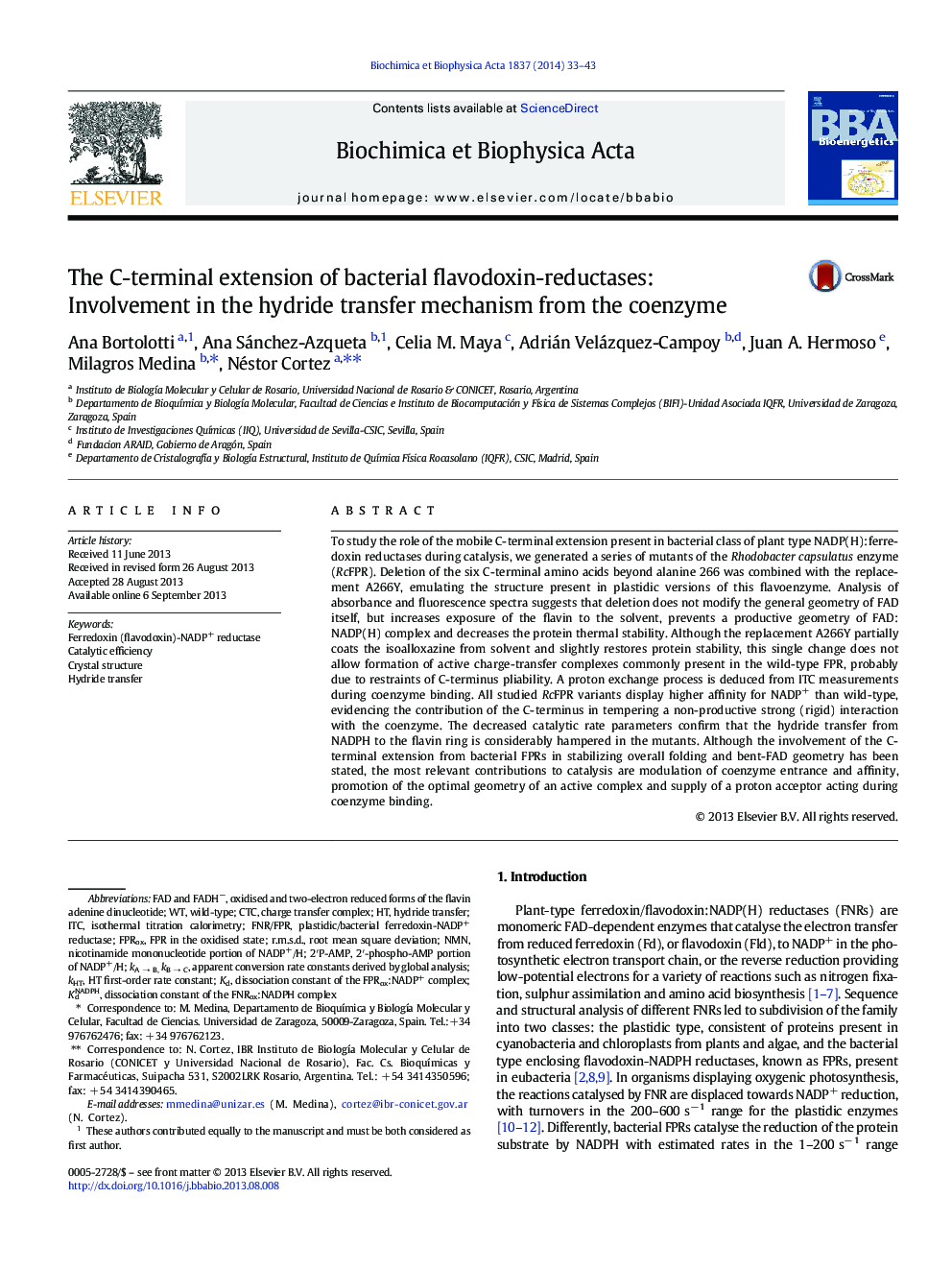| کد مقاله | کد نشریه | سال انتشار | مقاله انگلیسی | نسخه تمام متن |
|---|---|---|---|---|
| 10795754 | 1052594 | 2014 | 11 صفحه PDF | دانلود رایگان |
عنوان انگلیسی مقاله ISI
The C-terminal extension of bacterial flavodoxin-reductases: Involvement in the hydride transfer mechanism from the coenzyme
دانلود مقاله + سفارش ترجمه
دانلود مقاله ISI انگلیسی
رایگان برای ایرانیان
کلمات کلیدی
CTCITCKHTNMNr.m.s.d.Hydride transfer - انتقال هیدریدهاCatalytic efficiency - بازده کاتالیزوریCrystal structure - ساختار کریستالیCharge transfer complex - مجموعه انتقال شارژroot mean square deviation - میانگین انحراف مربع ریشهwild-type - نوع وحشیIsothermal titration calorimetry - کالری سنجی تیتاسیون ایزوترمال
موضوعات مرتبط
علوم زیستی و بیوفناوری
علوم کشاورزی و بیولوژیک
دانش گیاه شناسی
پیش نمایش صفحه اول مقاله

چکیده انگلیسی
To study the role of the mobile C-terminal extension present in bacterial class of plant type NADP(H):ferredoxin reductases during catalysis, we generated a series of mutants of the Rhodobacter capsulatus enzyme (RcFPR). Deletion of the six C-terminal amino acids beyond alanine 266 was combined with the replacement A266Y, emulating the structure present in plastidic versions of this flavoenzyme. Analysis of absorbance and fluorescence spectra suggests that deletion does not modify the general geometry of FAD itself, but increases exposure of the flavin to the solvent, prevents a productive geometry of FAD:NADP(H) complex and decreases the protein thermal stability. Although the replacement A266Y partially coats the isoalloxazine from solvent and slightly restores protein stability, this single change does not allow formation of active charge-transfer complexes commonly present in the wild-type FPR, probably due to restraints of C-terminus pliability. A proton exchange process is deduced from ITC measurements during coenzyme binding. All studied RcFPR variants display higher affinity for NADP+ than wild-type, evidencing the contribution of the C-terminus in tempering a non-productive strong (rigid) interaction with the coenzyme. The decreased catalytic rate parameters confirm that the hydride transfer from NADPH to the flavin ring is considerably hampered in the mutants. Although the involvement of the C-terminal extension from bacterial FPRs in stabilizing overall folding and bent-FAD geometry has been stated, the most relevant contributions to catalysis are modulation of coenzyme entrance and affinity, promotion of the optimal geometry of an active complex and supply of a proton acceptor acting during coenzyme binding.
ناشر
Database: Elsevier - ScienceDirect (ساینس دایرکت)
Journal: Biochimica et Biophysica Acta (BBA) - Bioenergetics - Volume 1837, Issue 1, January 2014, Pages 33-43
Journal: Biochimica et Biophysica Acta (BBA) - Bioenergetics - Volume 1837, Issue 1, January 2014, Pages 33-43
نویسندگان
Ana Bortolotti, Ana Sánchez-Azqueta, Celia M. Maya, Adrián Velázquez-Campoy, Juan A. Hermoso, Milagros Medina, Néstor Cortez,